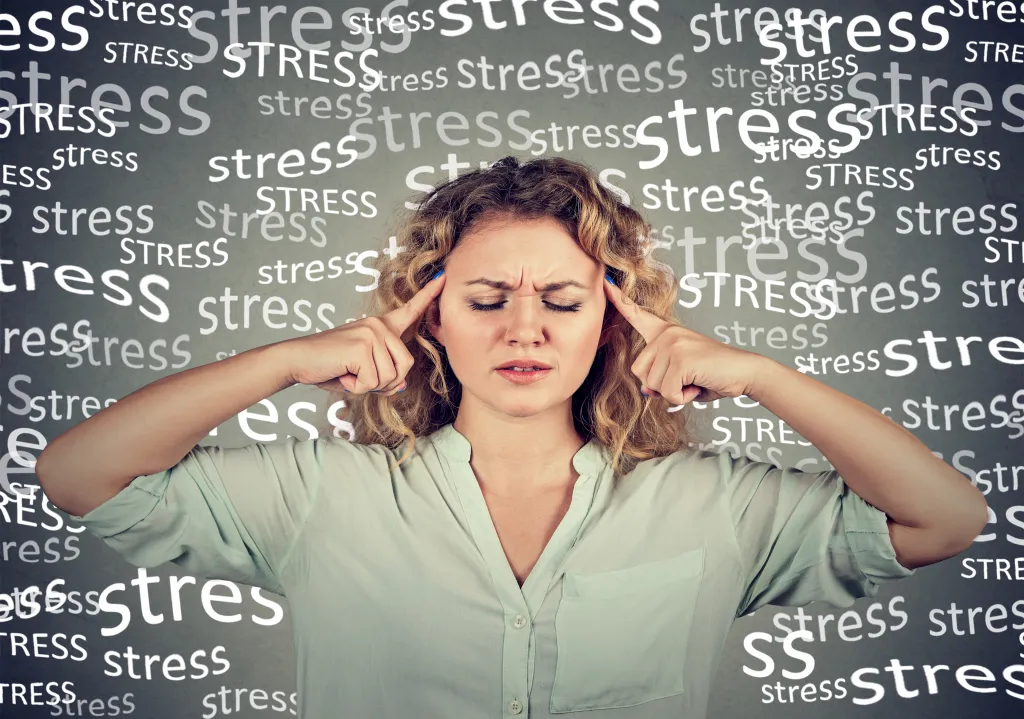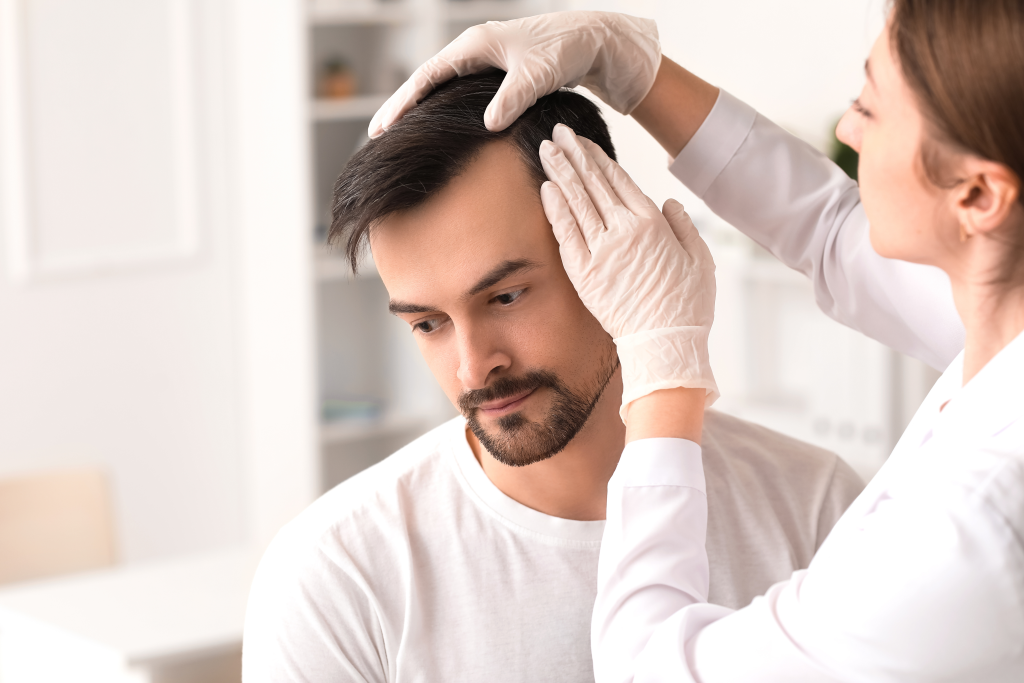At a glance
Hair loss can result from stress, hormonal imbalances, nutrient deficiencies, genetic predisposition, and damage to the scalp or follicles. Understanding the top causes of hair loss and addressing them through lifestyle changes, a balanced diet, and gentle hair care can help slow shedding, support regrowth, and maintain overall hair health.
A receding hairline can feel discouraging. However, hair loss is a common issue with many potential underlying causes, including stress, nutrient deficiencies, and poor scalp health.
Discover the common causes of hair loss and learn how making beneficial dietary and lifestyle changes can help combat bald spots and encourage hair regrowth.
Understanding the types of hair loss
Hair loss can appear in various forms depending on its cause, pattern, and progression. It may present as patchy hair loss, overall thinning, a receding hairline, or distinct bald spots.
Here are some of the most common types of hair growth disorders.
Pattern hair loss
Pattern hair loss is the most common type of excessive and premature hair shedding and is typically hereditary.
Androgenetic alopecia, also known as male pattern baldness in men and female pattern hair loss in women, involves the gradual thinning of the hair, typically at the crown, temples, or along the part line.
In contrast, telogen effluvium causes periods of pattern hair shedding after significant events of stress or illness, often reversing over time.
Autoimmune-related hair loss
Conditions such as alopecia areata and anagen effluvium cause patchy bald spots on the scalp or body and are believed to be triggered by imbalanced immune responses.
Scarring and permanent hair loss
Scarring alopecia refers to hair loss caused by scalp inflammation and associated hair follicle damage, which can lead to permanent hair loss.
This type of hair loss often results from certain skin diseases, trauma, or burns, and is characterized by the destruction of hair follicles, which are replaced by scar tissue.
Treatment-related hair loss
Certain hair care practices can cause hair loss by directly damaging the hair shaft or follicles.
Traction alopecia results from tight hairstyles like ponytails, braids, or extensions that put constant tension on the scalp, leading to thinning or permanent loss if not managed effectively.
In addition, frequent use of harsh chemical treatments, such as relaxers, bleaches, or dyes, can cause damaged hair follicles and weaken hair, causing breakage and shedding.
Watch the video below to discover the number one cause of hair loss.
Common risk factors for hair loss
While genetic predisposition, autoimmune conditions, and hormonal imbalances are key risk factors for hair loss, poor dietary and lifestyle habits can also influence scalp and hair follicle integrity.
Androgenic alopecia, a type of hereditary hair loss, is among the most prevalent causes of both male and female pattern baldness and genetically predisposed permanent hair loss.
In addition to genetics, hormonal imbalances linked to thyroid disorders, polycystic ovary syndrome (PCOS), or menopause, can also significantly disrupt the hair growth cycle and contribute to shedding.
Furthermore, stress, older age, circulatory issues, poor metabolic health, nutritional deficiencies, and imbalanced immune responses can all increase susceptibility to hair loss by impairing the body’s ability to nourish and maintain healthy hair follicles.

Top causes of hair loss
Chronic stress is a significant contributor to hair loss, especially in individuals with a genetic predisposition, autoimmune disorders, or hormonal imbalances.
High stress levels disrupt hormone balance and increase hair loss. Supporting your system with vitamins for stress and anxiety, such as magnesium and B vitamins, can improve both mental health and hair resilience.
In addition to directly triggering hair loss, stress can amplify underlying conditions that already put the hair follicles at risk.
Cortisol, the primary stress hormone, can disrupt the hair growth by pushing the hair growth cycle into the telogen phase, during which hair follicles shrink and active hair growth stops.
This can lead to telogen effluvium, characterized by noticeable hair loss or excessive shedding of scalp hair.
Stress can also contribute to hormonal imbalances and dysregulated immune responses, greatly increasing the risk of autoimmune-related hair disorders such as androgenetic alopecia or alopecia areata.
A study published in Drugs in Dermatology highlights that hair loss occurs frequently after stressful events, summarizing, “Telogen effluvium is one of the major hair growth disorders and is closely related to stress. Occurring mainly in women, telogen effluvium can be induced as a result of stress or extreme hormonal imbalance.”1
Furthermore, healthy hair growth and optimal hair follicle function require several nutrients, including B vitamins, vitamin D, iron, zinc, and copper.
“Poor dietary habits, especially diets high in refined carbohydrates, added sugars, and processed foods, can contribute to inflammation, hormonal imbalances, and nutrient deficiencies,” explains Dr. Berg. “These are all factors that impair scalp health and disrupt the hair growth cycle.”

Natural remedies for hair loss
To combat thinning hair and bald patches, it’s crucial to address and manage the underlying issues that may contribute to poor scalp health and hair follicle function.
Here are four natural remedies for hair loss.
1. Practice stress reduction
Because chronic stress is a major contributor to hair loss, finding ways to counteract the effects of everyday stress and incorporate relaxation strategies is vital to protecting hair follicles and supporting healthy hair growth.
Engaging in a hobby, spending time in nature or with loved ones, practicing deep breathing techniques, and prioritizing good-quality sleep are all excellent tools to reduce stress and support overall well-being.
2. Adopt a nutrient-dense, low-carb diet
A high-carb diet can trigger or worsen hormonal imbalances linked to poor hair growth and increased shedding.
Following a nutrient-dense low-carb diet, such as Healthy Keto®, is an excellent strategy to support the body’s nutritional needs for optimal hair growth.
This advanced version of the ketogenic diet focuses on minimally processed, nutritious whole foods, which are naturally rich in hair-health-promoting nutrients, including B vitamins, zinc, iron, and copper.

3. Prioritize vitamin B-rich foods
B vitamins, especially biotin, vitamin B12, and folate, are essential for hair follicle function, and including foods rich in these essential nutrients can help reduce the risk of losing hair prematurely.
Whole foods such as pasture-raised eggs, salmon, organ meats, sardines, nuts, seeds, avocado, and leafy green vegetables are excellent choices to minimize further hair loss.
4. Maintain optimal vitamin D levels
Research published in the Journal of Cosmetic Dermatology suggests that Vitamin D is involved in pathways of hair follicle function and that deficiency is associated with an increased risk of various hair growth disorders.2
To support optimal vitamin D levels, it’s recommended to get around 15 to 30 minutes of sunlight exposure several times a week, depending on your skin tone and geographical location.
In addition, include vitamin D-rich foods, such as salmon, mackerel, and sardines, as well as egg yolks, grass-fed butter, and beef liver.

Hair loss prevention
Those at increased risk of hair loss, or anyone beginning to notice hair loss, thinning hair, or a receding hairline, can take proactive steps to slow hair loss and support healthy hair growth.
It’s recommended to avoid tight hairstyles, harsh chemicals, and excessive heat, and instead opt for sulfate-free shampoos and nourishing oils such as argan or rosemary oil.
Excessive washing can remove natural oils, which may dry out the scalp and hair and cause thinning or shedding. Aim to wash your hair no more than 2 to 3 times per week and use a gentle, moisturizing shampoo.
In addition, regular scalp massages stimulate blood flow to the follicles, which may help regrow hair over time.
According to research published in Collegium Antropologicum, excessive exposure to ultraviolet (UV) radiation in sunlight is a frequent cause of structural hair shaft impairments and loss of hair follicle integrity.3
This highlights the importance of protecting hair from sun exposure, especially during prolonged outdoor activity, by wearing hats or using UV-protectant hair products.
Additionally, avoiding alcohol, processed foods, and added sugars can help reduce inflammation, balance hormones, and create an internal environment conducive to strong, healthy hair growth.

When to talk to your doctor about hair loss
If you’re experiencing sudden hair loss, rapid thinning, or patchy bald spots, it’s important to speak with a healthcare provider to have your hair loss diagnosed properly.
Early treatment is crucial, as many pharmaceutical hair loss options are more effective when started early.
A doctor can help treat hair loss by identifying underlying health issues through blood tests that can evaluate thyroid function, nutritional deficiencies, or autoimmune activity.
Depending on the diagnosis, a doctor may recommend hair loss treatment, including topical remedies, oral medications, or hormonal therapy.
In some cases, hair transplant procedures may be necessary to restore permanent hair loss, often linked to androgenetic alopecia, scarring alopecia, or long-term hair follicle damage, where natural regrowth is no longer possible.
Key takeaways
- Top causes of hair loss include chronic stress, hormonal shifts, nutrient deficiencies, autoimmune disorders, and genetic predisposition.
- Stress management, including adequate sleep and relaxation techniques, can help support hormone balance, protecting hair follicles and supporting healthy hair growth.
- Nutrient-dense whole foods rich in B vitamins, iron, zinc, copper, and vitamin D are essential for optimal follicle function and hair health.
- A gentle hair care routine, along with avoiding tight hairstyles, harsh chemicals, excessive heat, and over-washing, can help prevent further damage and thinning.
- Early intervention, consistent care, and addressing underlying imbalances play a vital role in slowing or reversing hair loss and promoting scalp and follicle health.
FAQ
1. What is the main cause of hair loss?
Stress is a major contributor to hair loss, as it can trigger or worsen many of the underlying factors, including hormonal imbalances, autoimmune reactions, and even nutritional deficiencies.
Chronic stress can also directly trigger hair loss by interrupting the hair growth cycle and follicle functions, which can cause weak and brittle hair prone to shedding.
2. Which vitamin deficiencies cause hair loss?
Nutritional deficiencies associated with hair loss include inadequate levels of vitamin D, B vitamins such as biotin, vitamin B12, and folate, as well as iron, zinc, and copper.
3. How do I stop my hair from falling out?
To stop hair from falling out, it’s crucial to focus on addressing underlying causes such as stress, nutrient deficiencies, and hormonal imbalances, while adopting gentle hair care practices and following a nutritious diet.
However, sudden or severe hair loss requires consultation with a healthcare professional to accurately diagnose the cause and determine the most effective treatment.
4. Will hair loss from stress grow back?
Yes, stress-related hair loss is usually temporary, and hair often grows back once stress is effectively managed, which helps the natural hair growth cycle return to its normal sequence.
5. How common is hair loss?
Hair loss is common. It’s estimated that most men and over half of all women experience some degree of hair thinning, shedding, or hair loss during their lifetime.
Sources
- https://jddonline.com/articles/stress-and-the-hair-growth-cycle ?
- https://pubmed.ncbi.nlm.nih.gov/34553483/ ?
- https://pubmed.ncbi.nlm.nih.gov/19138021/ ?














